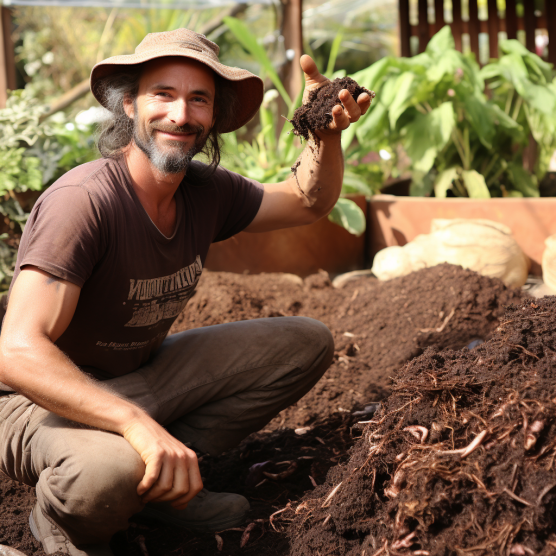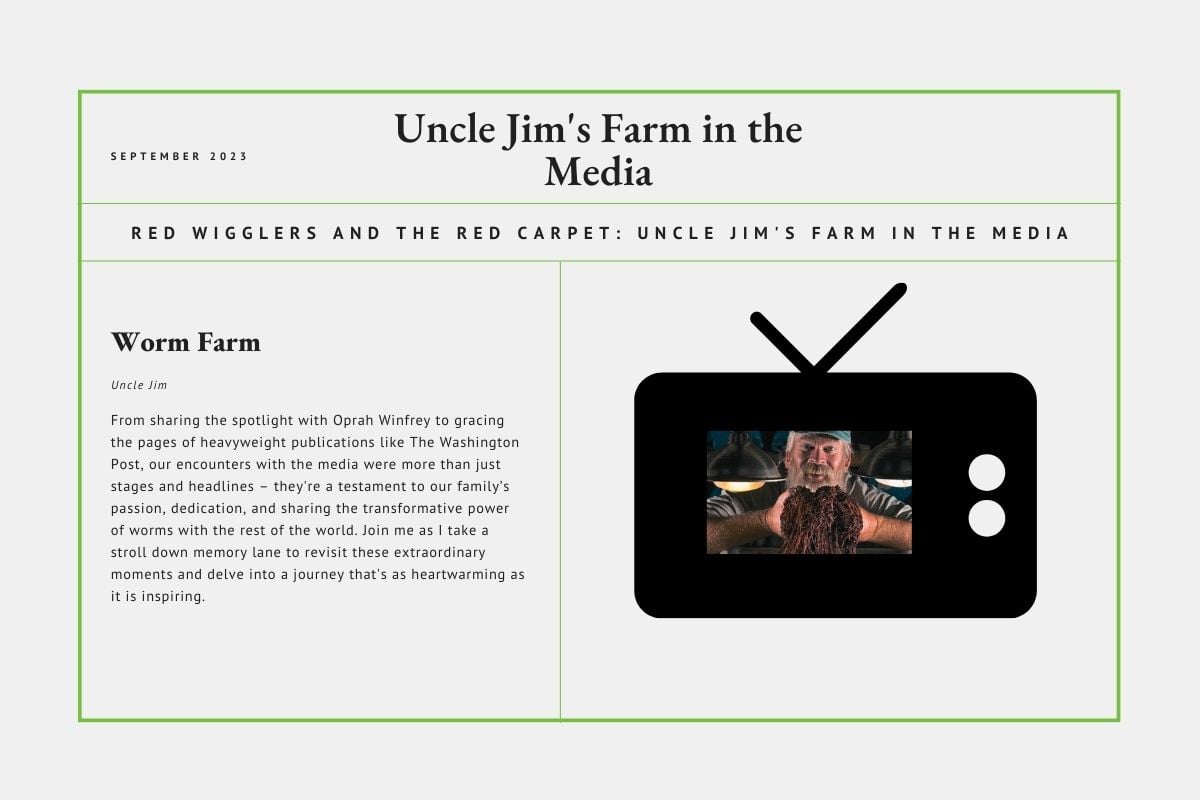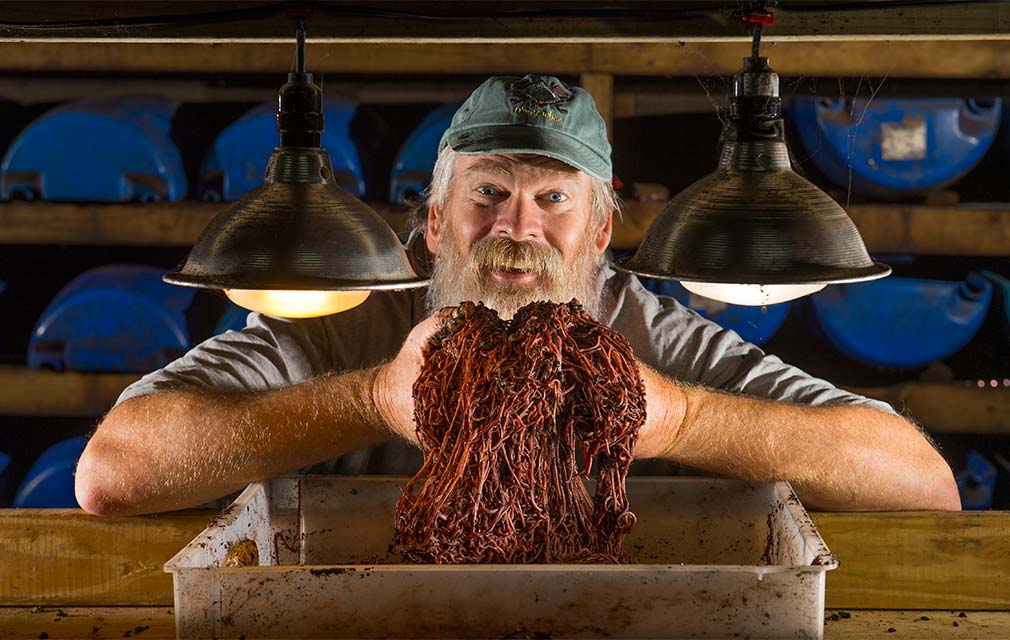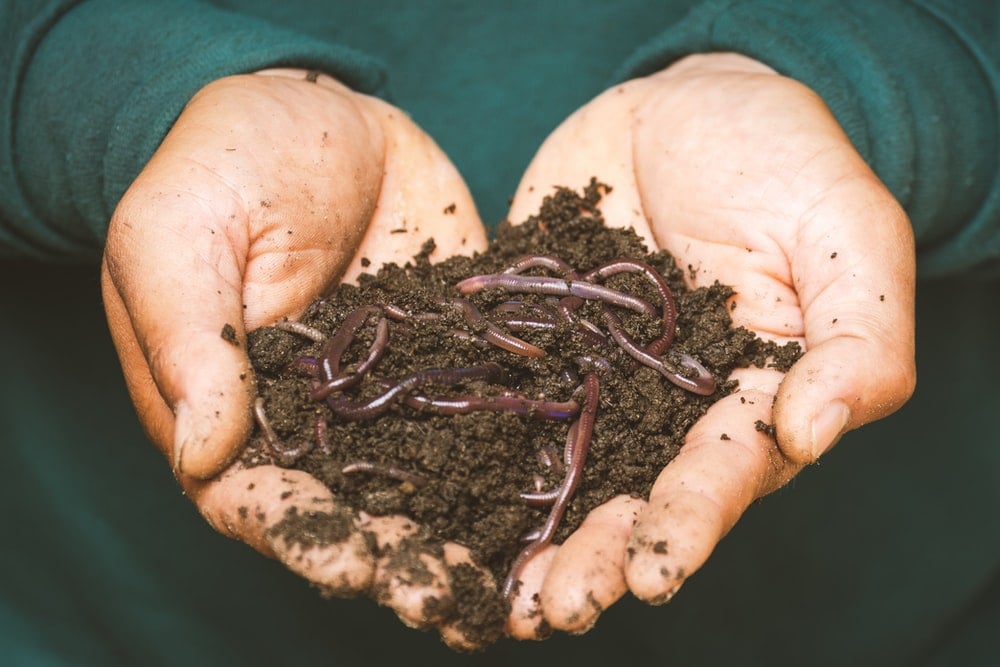
You’ve probably only ever known worms as the reddish-brown creatures that crawl through your garden or placed at the end of a fishing rod. Yet these little wrigglers do a lot more than you think! Often unnoticed by everyone in the world, worms are a vital part of our ecosystem. Their main job is to decompose organic matter and turn it into black gold.
Want to know more about these creatures? Keep on reading and let Uncle Jim tell you everything he knows from how earthworms eat all the way to how their castings help plants grow faster and healthier. You never know, by the end of this article, you might like these creatures enough to start vermicomposting.
Common Questions & Facts About Worms – Uncle Jim Answers

Do you know everything about your wiggly friends in the bin or garden? With their simple life underground, worms can remain mysterious creatures! Let’s open a can of worms and answer some popular questions and state less known worm facts about the life of Uncle Jim’s favorite creatures.
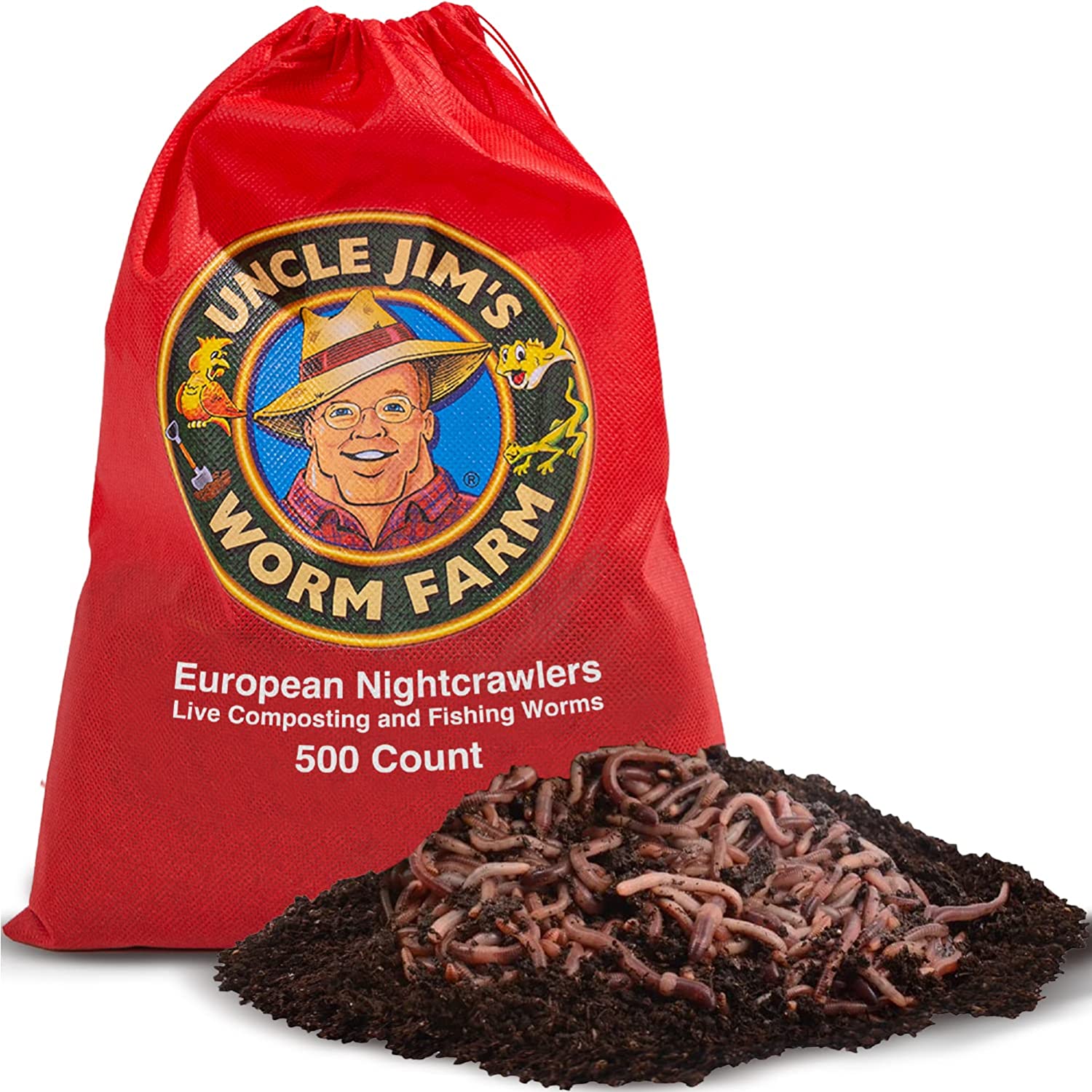
Do worms have mouths?
Yes! It is located in the first segment of its anterior (front) end. When the anterior end contracts, the mouth is covered by a very small and sensitive patch of flesh called the prostomium. Then, when the worm looks for food, the prostomium can stretch out, sensing suitable food particles and allowing the mouth to open wide to take in a surprising quantity of food. This is why your earthworms can gobble up your food scraps in no time!
Are worms edible?

Yes, you can eat worms. They can be consumed raw or cooked. Although it might seem unappetizing to you, it is common in certain cultures in Western Asia for locals to consume worms as a source of protein. Before you try out one of these wriggly creatures, make sure to read up on which ones are safe because some of them can contain parasites and germs. Here is what Uncle Jim has to say about it!
Do worms have eyes?
No, worms do not have eyes but that doesn’t stop them from eating their weight in organic material in a day. You actually benefit a lot from it because their castings act as a great fertilizer to improve soil structure. But how do they move? Well, worms have cell receptors that sense light or darkness which then alerts their brains to move up or down the bin.
Do worms have brains?
The brain is a fundamental organ of any living creature, including the earthworm. Although what they have is not as complex as that of humans, it is enough for them to do what they need to do in order to survive.
What are the types of worms used in vermicomposting?

The most common earthworms used in vermicomposting are the red wrigglers and the European live night crawlers. They also go by different names such as red worms, tiger worms, and manure worms. They are preferred because both species prefer a compost environment over regular soil due to all of the nutrients they can consume in the bin.
Do worms need oxygen?
Yes, worms require air to live. Their moist skin receives oxygen via diffusion. Under aeration, worms can live for long periods of time. Worms also expel carbon dioxide through their skin. This oxygen and carbon dioxide exchange requires excellent air circulation throughout the worm bin bedding.
How long do worms live?
The average lifespan of an earthworm is a year. In natural environments, the effects of extreme weather, lack of food or water, and the presence of predators all shorten the lifespan of the common earthworm. In controlled culture, some varieties of worms have been shown to live longer.
Worms of the Eisenia Fetida species have been able to live for four and half years, and the Lumbricus Terrestris species even longer. In a healthy worm bin, worms will reproduce, replacing themselves and increasing the worm population.
Do worms die in the bin?
Worms will, of course, die wherever they happen to be. But you probably won’t see many dead worms in a well-maintained vermicomposting bin. This is because the process of decomposition happens quickly. Other organisms in the bin will break down dead worms, likely before you even notice.
If you find a large number of dead worms in your bin, you need to diagnose and fix the problem quickly. It could be as simple as adding fresh bedding but sometimes the problem is much bigger. It could be a temperature issue, an imbalance in pH levels which is best corrected early on to prevent too many worms from dying.
What do worms eat?

This wouldn’t be a complete worm facts article unless we discussed what these little guys eat in order to provide you with healthy soil particles. The short answer to this question is worms eat only organic matter. But there are certain organic foods that are more beneficial. For example, raw fruits and vegetables are best. It is better to stay away from meats, oil, and dairy products as they take too long to break down.
Fun Facts About Worms You Need to Know
Worms are blind and move around in the dark. And it’s not because they’re wearing dark sunglasses – they don’t even have eyes.
Worms are afraid of the light. They move away from it and burrow deeper into the soil because they know that if they are exposed to it for too long (e.g. around an hour) they will become paralyzed.

Worms can tunnel way down in the soil. And they can take over your land. For example, in one acre of land, there can be up to a million of them. It’s like an invasion happening when you’re not watching.
Small earthworms wiggle through the earth at about 0.2 centimeters per second. This works out to about 27 feet per hour. A medium-sized earthworm can go at about one and a half centimeters per second, which is about 185 feet per hour. Really big earthworms (about 8 and a half grams) crawl at about 2 centimeters per second, which is about 240 feet per hour.
They’re not as fast as the Australian tiger beetle, which has been recorded speeding along at 6.8 km/h (4.2 mph) or 171 body lengths per second. But they’re not as slow as the banana slug, which only averages around 32.5 feet per hour. Or coral, which doesn’t even go anywhere.

Worms can become giants. For example, the largest earthworm in South Africa was 22 feet long. And one Australian earthworm weighed in at 1 1/2 pounds.
Worms are cold-blooded. So they’re like snakes in this respect.
Worms breathe through their skins. This is how they make up for the fact that they don’t have lungs or other respiratory organs.
Worms can turn your garbage and organic matter into gold (or at least that’s what farmers call their black gold, vermicast). Worms can eat their body weight in food each day.

Worms huddle together. Sometimes it’s just because they are all dining at the same restaurant and heading for the same food. Sometimes it’s because worms mate.
Worms are slimy. In fact, they secrete it and their lubricating fluid contains nitrogen. So they’re moving fertilizers. Their slime can also turn your soil into clumps called “aggregates.” Aggregates are highly desirable for soil health and growing plants.
Worms can regenerate. If you cut an earthworm, it sometimes grows back the lost segments. It depends on where it is cut. In that respect, they’re also like a lizard, which can regrow a new tail, and starfish, which can grow back an arm.
A worm has both genders in one. They have both male and female sex organs, which means earthworms are hermaphrodites. They mate by lying together and exchanging sperm. Then each worm forms an egg capsule and releases the capsule. Baby worms hatch out of these eggs called cocoons.

Worms sometimes try to escape. The odd worm can be a bit of a rogue in that it likes to hang out near the lid of your worm bin. Don’t worry. It’s just a wanderer. But if you feed your composting worms the wrong food, sometimes they’ll try to escape. They’ll do this if you’ve given them too much nitrogen-rich food, like grass clippings, or too many acidic foods, like tomatoes, coffee grounds, tea bags, onions, pineapples, citrus peels, or too much white paper (which contains bleach).
Or have you been hassling them too often by opening the lid many times a day and leaving the light on? Maybe they’re just stressed, and that’s why they felt they needed to leave.
Keep them happy and they will stick around for a long time!
Need more information?
Think you’ve become an expert and want to delve deeper into the wonderful world of worms? The team at Uncle Jim’s worm farm can help you with buying live worms all the way to how you can make and take care of your worm bins in the summer. We would be more than happy to answer any and all questions you might have!
Want to start vermicomposting but not sure how? You’re off to a great start by reading this article! Learn more about the step by step process in our Vermicomposting For The Avid Beginner article or browse through all our other helpful articles.





